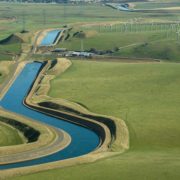The Bureau of Reclamation March 28, announced an increase in Central Valley Project 2023 water supply allocations. After below average precipitation in February, Reclamation announced a conservative initial water supply allocation for the CVP on Feb. 22. Additional atmospheric river systems have since boosted hydrological conditions and storage volumes, allowing for a more robust water supply allocation.
Since making initial allocations last month, Shasta Reservoir, the cornerstone of the Central Valley Project, has increased from 59% to 81%, and San Luis Reservoir, the largest reservoir south-of-Delta, from 64% to 97%. Record-breaking snowpack conditions currently exist in the Southern Sierra coupled with significant snowpack in the Central Sierra and Northern Sierra/Trinity.
2023 Central Valley Project supply allocations increased
Based on current hydrology and forecasting, Reclamation is announcing the following increases to CVP water supply allocations:
North-of-Delta Contractors
- Irrigation water service and repayment contractors north-of-Delta are increased to 80% from 35% of their contract total.
- Municipal and industrial water service and repayment contractors north-of-Delta are increased to 100% from 75% of their historic use.
South-of-Delta Contractors
- Irrigation water service and repayment contractors south-of-Delta are increased to 80% from 35% of their contract total.
- M&I water service and repayment contractors south-of-Delta are increased to 100% from 75% of their historical use.
Friant Division Contractors
- Friant Division contractors’ water supply is delivered from Millerton Reservoir on the upper San Joaquin River and categorized by Class 1 and Class 2. The first 800,000 acre-feet of available water supply is considered Class 1; Class 2 is considered the next amount of available water supply up to 1.4 million acre-feet. Class 1 remains at 100% and Class 2 was previously increased from 20% to 70% on March 7.
Friant Dam is currently being operated for flood control purposes; as long as these conditions exist contractors are able to take delivery of all available water from Friant Dam to the maximum extent of their respective contracts.
All other CVP water supply allocations remain the same as noted in the Feb. 22 announcement.
As the water year progresses, changes in hydrology, actions that impact operations, and opportunities to deliver additional water will influence future allocations. Reclamation will continue to monitor hydrology and may adjust basin-specific allocations if conditions warrant an update. Water supply updates and past year’s allocations are posted on Reclamation California-Great Basin Region’s website.



